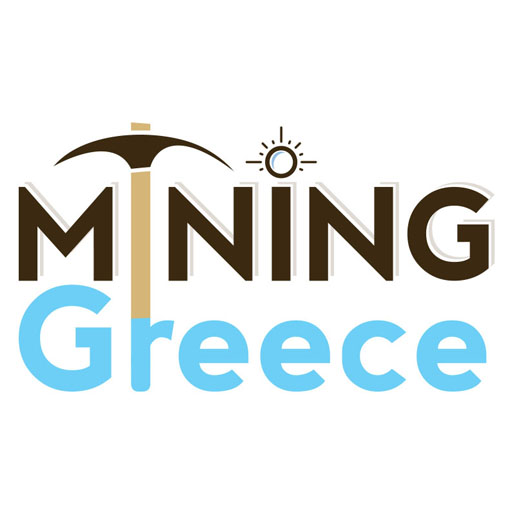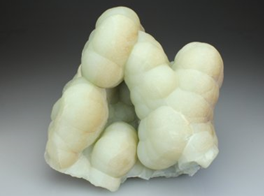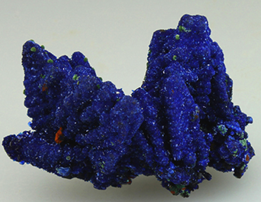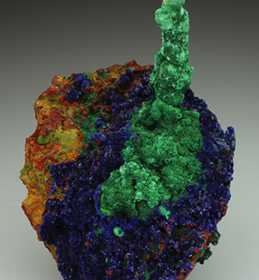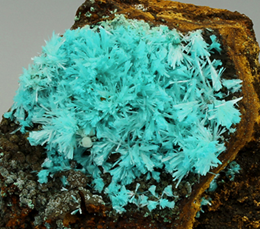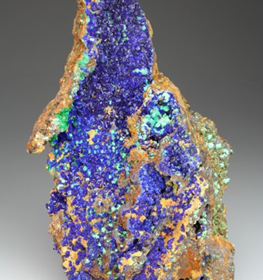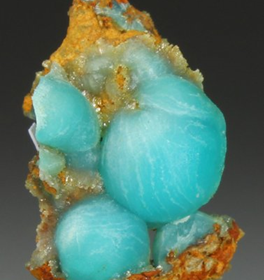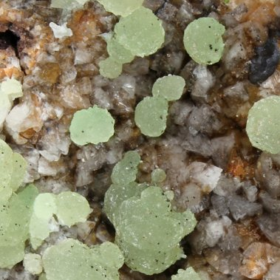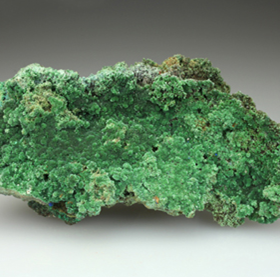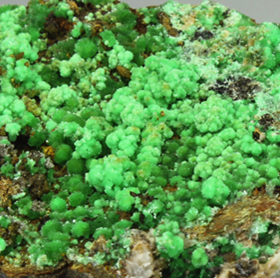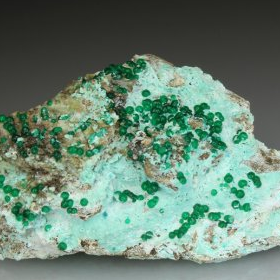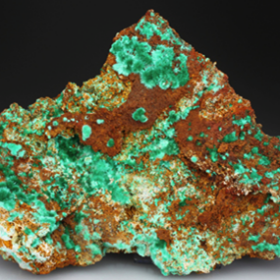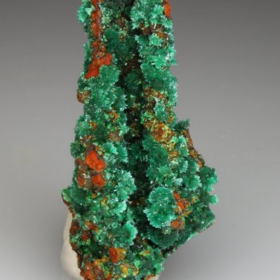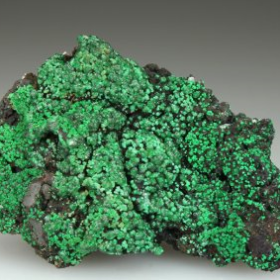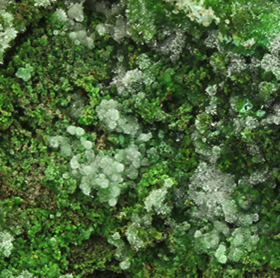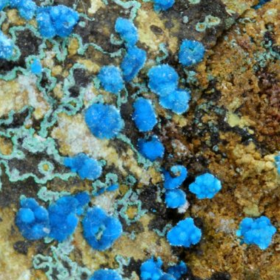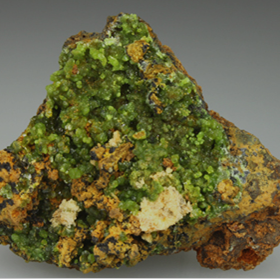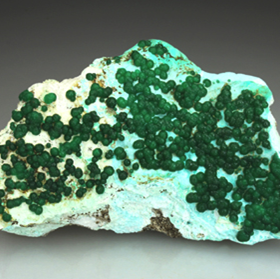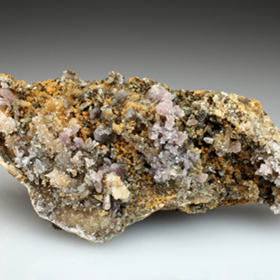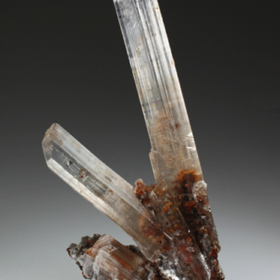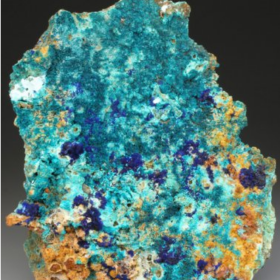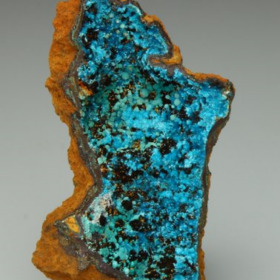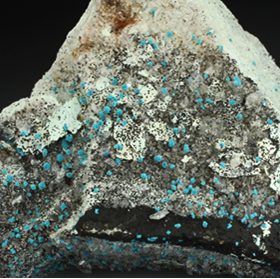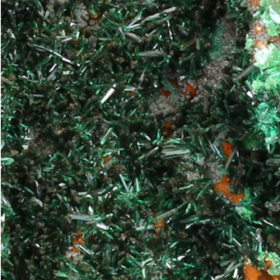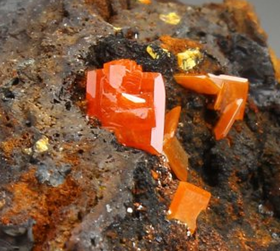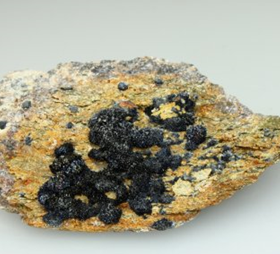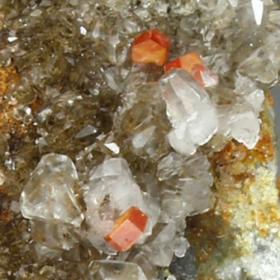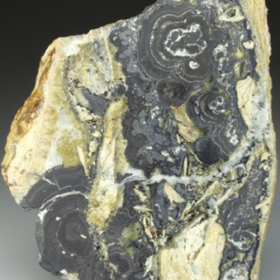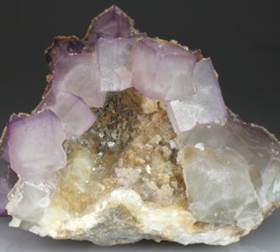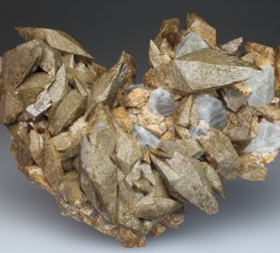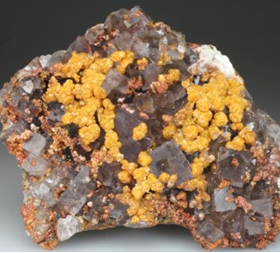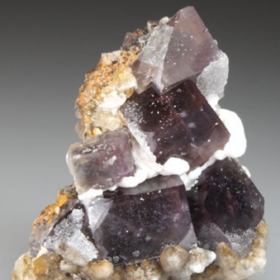http://ancient-greece.org/archaeology/lavrion.html
Lavrion (Λαύριον, Λαύριο, Lavrio, Laurio, Laurium), is a rugged area in eastern Attica, near Athens, where the ancient silver mines are located. During the classical era, these silver veins were used to finance the formidable navy used to defeat the Persians in the naval battle of Salamis, and helped spawn the Athenian empire of the Classical era.
History
Lavrion’s history has been tightly bound to the history of Greece since prehistoric times. There is evidence that mining activities took place as early as the 3d millennium BCE with small scale mining which continued on and off until the classical period. In 483 BCE the discovery of rich vein of silver in the vicinity of modern Ag. Konstantinos, otherwise known as Maronia, prompted large scale mineral extraction and processing by the Athenians.
The mines belonged to the city of Athens, and they were rented out to various individuals for a fixed percentage of the production. The most difficult work, including the ore extraction from underground mines, was done by slaves, many of whom lost their lives in the harsh process.
The wealth produced in the Lavrion mines was initially used at the insistence of Themistocles to construct a formidable navy of war triremes. Athens relied heavily on sea commerce for its wealth and on imports for food, so Themistocles argued that the navy would help Athens in its long standing rivalry with the island of Aegina and in the ongoing war with the Persian empire.
The Athenian navy proved to be of critical utility soon thereafter, when Xerxes invaded Greece with the Persian army by land and his navy by sea in 480 BCE. His huge Persian army met with defiance, but with initial success on land, but it was imperative that the Greek navy be defeated if the Persians were to supply their huge army by sea. The Athenian navy however, augmented with ships from allied states routed the larger Persian navy at the straits of Salamis.
The Lavrion mines thus had a direct and major effect on the creation of the subsequent Athenian empire, and on the celebration of a century of the Golden Age of Athenian democracy that followed.
The silver extracted from the mines was formed into the Athenian Tetrhadrachmon coin, which became the dominant commercial currency of the eastern Mediterranean during the classical era. These coins, along with the tribute paid by their allies in the Delian league, bestowed even more wealth upon Athenian citizens who used it to maintain their empire and to finance grand cultural projects.
The mines eventually declined during the Peloponnesian War (431-404 BCE) and stopped producing ore when after the Spartans captured the fort of Dekelia in 413 BCE and controlled access to the mines. Afterward, silver and lead extraction continued on and off throughout the subsequent centuries, but production never reached the volume produced during the Classical era.
The mines were abandoned in the 6th c. CE, and only reopened in 1859. The extraction of lead, manganese, and cadmium, in addition to smaller quantities of silver, helped finance the newly formed country of Greece in the 19th c. CE.
The Lavrion mines were finally abandoned after all the ore deposits were exhausted in 1982.
Today, several abandoned mining sites sprinkle the rugged landscape west of the modern town of Lavrion. The most prominent archaeological site is located at Agios Konstantinos. The ancient silver production site is poorly signposted, but easily accessible by car. The archaeological site sees few visitors and it’s a rough patch of land to negotiate, with no facilities anywhere nearby.
The Ancient Lavrion Mining District, Greece[http://crystalclassics.co.uk/news-story.php?id=177 By: Steve Rust]The Kristalle and Crystal Classics company (http://crystalclassics.co.uk/) were proud to announce the recent acquisition of the Lavrion mineral collection of Wolfgang and Karin Wendel (Germany). This collection is one of the most comprehensive assemblages of Lavrion minerals in the world, with most specimens collected in the 1990s.
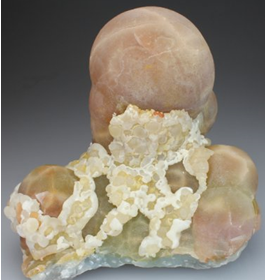

The Lavrion Mining District is situated on the Adriatic coast of modern day Greece in the Attica Prefecture, 40km west of Athens. Lavrion is now a major port, and a fast-growing area in Greece.The Lavrion Mining District is a mecca for mineral collectors from all over the world. The mines are well known for stunning, brightly colored specimens of supergene minerals. Particularly fine specimens of Smithsonite, Azurite, Annabergite, Adamite, Agardite, Mixite, Spangolite, and of course Serpierite have been produced from the mines. The area is also known for rare species, and is the type locality for 22 mineral species. The Lavrion Mines are likely to continue to produce new and exciting species in the future.
HISTORY
The Lavrion Mining District has been dated to the Early Bronze Age at about 3200-2800BC and is considered to be the earliest recorded site for the extraction of ore in Europe. From the recorded history of the mines (thanks to the Athenians) after a perceived lull there was an upsurge of mining activity in about 500BC. At this time silver output was so vast that the Athenians are thought to have constructed statues from pure Silver. The production of Silver at this time led to finance a large fleet of triremes to protect both the mines and the city state from invaders. In the early 4th century BC Athens was involved in a war with Sparta, pushing the mines of Lavrion into a decline for over 850 years, until the early Byzantine Period. In this early period the mines began again to be actively worked for silver, although for a short time. It is likely the mines then remained unworked for over 1300 years. In 1821 the Greeks began a war of independence against the Turkish Ottoman Empire who had ruled Greece for the previous 400 years, which lasted for 9 years with independence gained in 1830. It was not until 1859 that renewed interest was shown in the mines, when Andreas Cordellas was sent to ascertain the likelihood of reopening them. The report given to the Greek government was evidently a glowing one regarding the reworking of the ancient smelt slag. The Greek Metal Works Company of Lavrion was set up in 1873 with the purpose to recover the metals still held in the poorly smelted slags. The Greek company continued to process the old smelt slag until 1917. It’s at the same time (1875) when this company began work on the recovery of metals in the ancient slags, a French company called Compagnie Francaise des Mines du Laurium took an interest in the remaining orebodies in the area. The mines came into the ownership of Giovanni Battista Serpieri (1832-1897), after whom the mineral Serpierite is named. Not only did the French company extend development on known ore bodies, but they also discovered new reserves. Mining in the area continued until 1982 when all work was stopped and the mine closed for the last time. The result of thousands of years of mining activity is a labyrinth of underground passages believed to be nearly 2000km in extent.
GEOLOGY
The Lavrion area is part of the Attic–Cycladic metamorphic belt, an Alpine orogeny of the Hellenides. The area is believed to have been formed in the Late Cretaceous – Late Eocene with greenschist to amphibolite facies. The formation of Marble and Skarns is associated with thermal contact metamorphism with granite plutons which intruded in the Late Miocene. The large polymetallic sulphide deposition is associated with the granite pluton emplacement, and NW-SE trending tension faults which resulted in channel ways which facilitated the ascension of hot metal-rich fluids at temperatures of 125-280C into the Marble (‘manto-type’ or pipe-like formations of deposition) and Hornfels (deposition association with faulting). One of the controlling factors for the emplacement of the ore bodies in the Marble is believed to be the welling of the metal-rich fluids under the impermeable beds of Schist which overlay the Marble. The hot hydrothermal fluids formed solution cavities by dissolving the Marble, and these host the large polymetallic Sulphide ore bodies.
A major feature of the Lavrion mines is the extensive oxidation of the ore bodies due to uplift of the area in the faulting period, the water table standing at about 5mts above sea level. Oxidation of the ore bodies is estimated to reach a depth of over 250mts. Oxidation of the remaining ore bodies is still in action, as can be seen by the formation of various hydrated Sulphate minerals, such as Chalcanthite, Melanterite.
